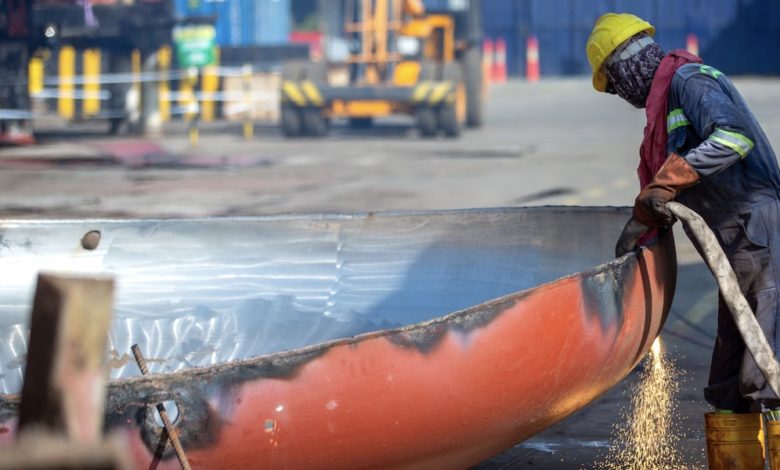Different shades of steel

Dr Anand Hiremath from Global Marketing Systems (GMS) writes for Splash today on the topic of green steel.
You may well have heard about something called green steel and its carbon-reducing qualities.
But what is green steel? In simple terms, green steel is produced using less energy or with a minimum carbon footprint. Conventional production requires coal in the process of making steel, producing major carbon emissions – the blast furnace method yields about two tonnes of CO2 per tonne of steel. If coal is replaced with alternative clean energy, the steel-making process becomes green. The energy used to produce steel alone contributes to over 7% of global greenhouse gas emissions.
Currently, Sweden is leading the world in the commercialisation of large-scale green steel production, with its H2 Green Steel plant set to start producing steel from green hydrogen in 2024. Hydrogen is believed to be the fuel of the future by many and has become the priority for low-emissions technology.
But despite the hype, not all hydrogen is clean or green – it all depends on how it’s produced. If hydrogen is extracted from fossil fuels such as coal or natural gas, which produces CO2 in the process and is released into the atmosphere, then the process of hydrogen production becomes non-green. However, with the CO2 emissions captured, hydrogen production starts to look green.
In addition, if hydrogen is produced using electricity through a process called electrolysis (which splits water into hydrogen and oxygen) and the electricity consumed for this process comes from renewable resources (solar, wind, thermal, hydro) then the hydrogen produced is termed green or clean.
Regarding steel, it all depends on the boundary set for the life cycle assessment. If we consider the raw materials used to make solar panels or wind turbine blades, then the hydrogen produced at the end may look green, but it is not and there is no limit to what extent we want to cover in the scope of emissions.
Another term being used in connection with green steel is ResponsibleSteel – a not-for-profit organisation and the steel industry’s first global multi-stakeholder standard and certification initiative. ResponsibleSteel is a relatively new programme built on eight years of work to define and promote steel that has been produced and sourced responsibly. Its vision is to build a sustainable steel industry in cooperation and mutual commitment from companies at all levels of the steel supply chain, representatives of civil society, and other stakeholders.
Its mission is to provide businesses and consumers worldwide with confidence that the steel they use has been sourced and produced responsibly at all levels of the steel supply chain, from suppliers of raw materials to end users. An independent certification standard and programme for the purpose has been developed. The organisation is funded through membership fees, financial contributions by some of its members, grants from philanthropic foundations and in-kind contributions from its civil society and business participants.
ResposibleSteel has partnered with the Climate Group to create SteelZero – an initiative to accelerate the steel industry’s transition to net zero carbon emissions. Using the power and influence of its members, SteelZero aims to send a strong demand signal to shift global markets and policies towards responsible production and sourcing of steel. To qualify for membership companies must make a public commitment to procure 100% net zero steel by 2050 and an interim commitment to procure, specify or stock 50% of their steel requirement by 2030.
It’s important to be clear on the terms of reference for green steel. The above points hopefully clarify the different names in today’s world marching towards sustainable steel making. There are many industries which for decades have produced green steel and the time has come to recognise the contribution of such industries. One such industry is ship recycling.
Steel produced through recycling of ships uses one third of the energy required to produce conventional steel via iron ore mining.

and this raises a further issue – how green is green hydrogen? Almost no work has been done yet on the GHG secondary effects of hydrogen slip – which will be considerable at all points of the fuel production and supply chain, potentially making this a high emitter than oil – latest science just out https://acp.copernicus.org/articles/22/9349/2022/?fbclid=IwAR3T94CBJvL1LDmxJnWCfAgc53hMEQCKuIq8w-30Hh4eBuaD72aJqIn1ynQ but also here https://www.euractiv.com/section/energy/news/scientists-warn-against-global-warming-effect-of-hydrogen-leaks/
And then the issue fo “renewables’ – just because a renewable energy source is used – sun, wind, etc – doesnt automatically make this green. It is never 100%, because there is always waste from energy conversion (2nd law of thermodynamics) . PV has already exposed our mineral supply blindness. If you need ot make steel and pour concrete to make a hydro dam or use energy to make a solar panel and battery and computer and wiring then it isnt strictly ‘renewable” is it, it is a lower GHG source than alternatives, but it is not truly renewable. If we are going to have ‘evidence-based’ decision making then we need to be clear about the science and the terminology we use to describe that science.